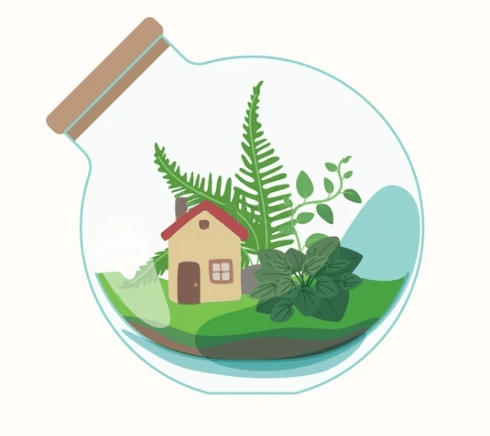Create Your Own Eco-Friendly Terrarium: A Sustainable DIY Project
In a world increasingly focused on sustainability and eco-conscious living, there’s a growing desire to bring a touch of nature into our homes. What better way to do this than by crafting your own eco-friendly terrarium? Terrariums are not only beautiful and low-maintenance but also a delightful way to incorporate greenery into your living space. In this DIY project, we’ll guide you through the steps of creating your own miniature ecosystem, all while keeping our planet in mind.
Materials You’ll Need:
- Glass Container: Choose a clear glass container, such as a jar, vase, or fishbowl. Upcycling an old glass container is an eco-friendly option.
- Gravel or Small Stones: Provide drainage for your terrarium by adding a layer of small stones or gravel.
- Activated Charcoal: This keeps the terrarium fresh by absorbing excess moisture and preventing odors.
- Potting Mix: Select a high-quality, well-draining potting mix suitable for the plants you’ll be using.
- Plants: Opt for small, low-maintenance plants like succulents, cacti, or air plants. These are eco-friendly choices as they require less water.
- Decorative Elements: Get creative with eco-friendly decorative elements like small rocks, seashells, or driftwood.
Steps to Create Your Eco-Friendly Terrarium:
Step 1: Clean the Container Start by cleaning your glass container thoroughly to ensure that it’s free from any dirt or residue.
Step 2: Add Gravel Create a base layer of small stones or gravel at the bottom of your container. This layer helps with drainage, preventing overwatering and root rot.
Step 3: Place Activated Charcoal Sprinkle a thin layer of activated charcoal over the gravel. This step keeps the terrarium fresh and prevents any unwanted odors.
Step 4: Add Potting Mix Carefully add a layer of potting mix suitable for your chosen plants. Create small indentations in the soil where you’ll place your plants.
Step 5: Plant Your Selection Gently remove your selected plants from their containers and place them into the indentations in the soil. Leave enough space between them to allow for growth.
Step 6: Decorate Let your creativity shine! Add eco-friendly decorative elements like small rocks, seashells, or pieces of driftwood. These items not only add visual interest but also create a more natural environment.
Step 7: Water Sparingly Give your terrarium a light misting of water, being careful not to overdo it. The closed environment of a terrarium retains moisture, so it’s important not to flood it.
Step 8: Place in Indirect Light Find a spot in your home with indirect sunlight, as direct sunlight can create too much heat and moisture inside the terrarium.
Step 9: Maintenance With minimal care, your terrarium should thrive. Check the soil moisture occasionally, and water sparingly when needed. Trim or remove any overgrown plants.
Creating your own eco-friendly terrarium is not only a rewarding and enjoyable DIY project but also a wonderful way to promote sustainability in your living space. Plus, it’s a fantastic conversation starter and a unique decor piece. So, grab your materials, unleash your creativity, and bring a piece of nature into your home today!

